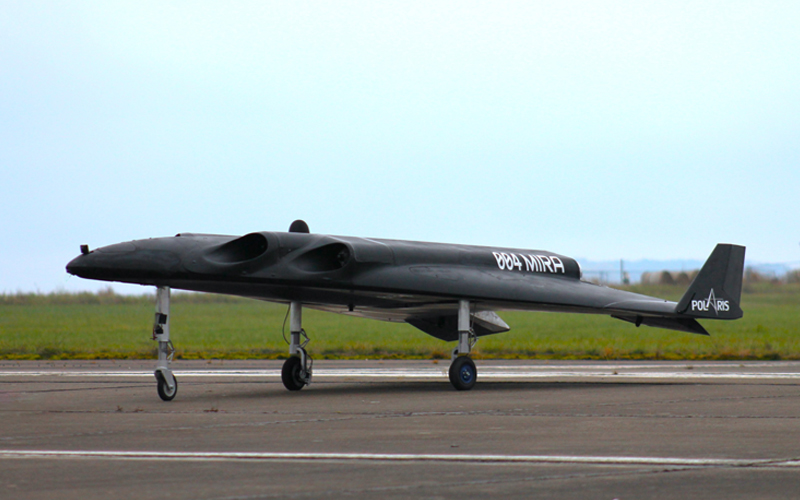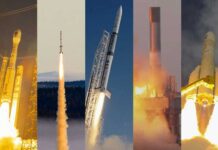
Bremen-based startup POLARIS Spaceplanes has completed the first flight of its MIRA demonstrator. The flight lasted for 2.5 minutes and covered a total distance of approximately nine kilometres.
MIRA is a 4.3-metre demonstrator that features a fiber-reinforced shell and a 5.2-square-metre wing area. The demonstrator is powered by four kerosene-fed jet engines and one of the company’s in-house designed AS1 aerospike rocket engines. The 155-kilogram (take-off mass) vehicle is a subscale prototype of AURORA, a multipurpose spaceplane, and hypersonic transport system that will be capable of delivering 1,000 kilograms to low Earth orbit with the aid of an expendable upper stage.
POLARIS Spaceplanes began testing MIRA on 18 October at the old Lemwerder airport near Bremen, with the vehicle’s first powered roll test and flight termination system test. On 25 October, the company was officially granted its vehicle operation licence, which gave POLARIS the green light to perform an initial flight test.
The first flight of MIRA was conducted on 26 October at the Peenemünde Airfield on the coast of the Baltic Sea. The flight utilized the vehicle’s four jet engines. Despite rain and heavy cross winds, the flight was completed flawlessly. The vehicle was piloted by Niels Herbrich, an Airbus A320 and Guinness World Records drone pilot, with support from his co-pilot Christian Hidde.
With an initial flight complete, POLARIS will be working towards the first flight powered by the vehicle’s aerospike engine, which is expected to occur before the end of the year. In order to conduct this flight, MIRA is licensed for beyond visual line of sight (BVLOS) operation. An initial telemetry set allows the vehicle to operate up to 20 kilometres from the ground station. For safety reasons during BVLOS flights, the vehicle is equipped with a fully redundant flight termination system.
MIRA is the fifth vehicle that POLARIS has tested to date, with the fleet having now performed a combined 51 flights. Once the company has learned all that it can from MIRA, it will move on to NOVA. Testing of the 6.7-metre vehicle will begin in 2024.




